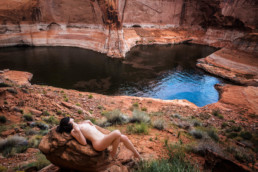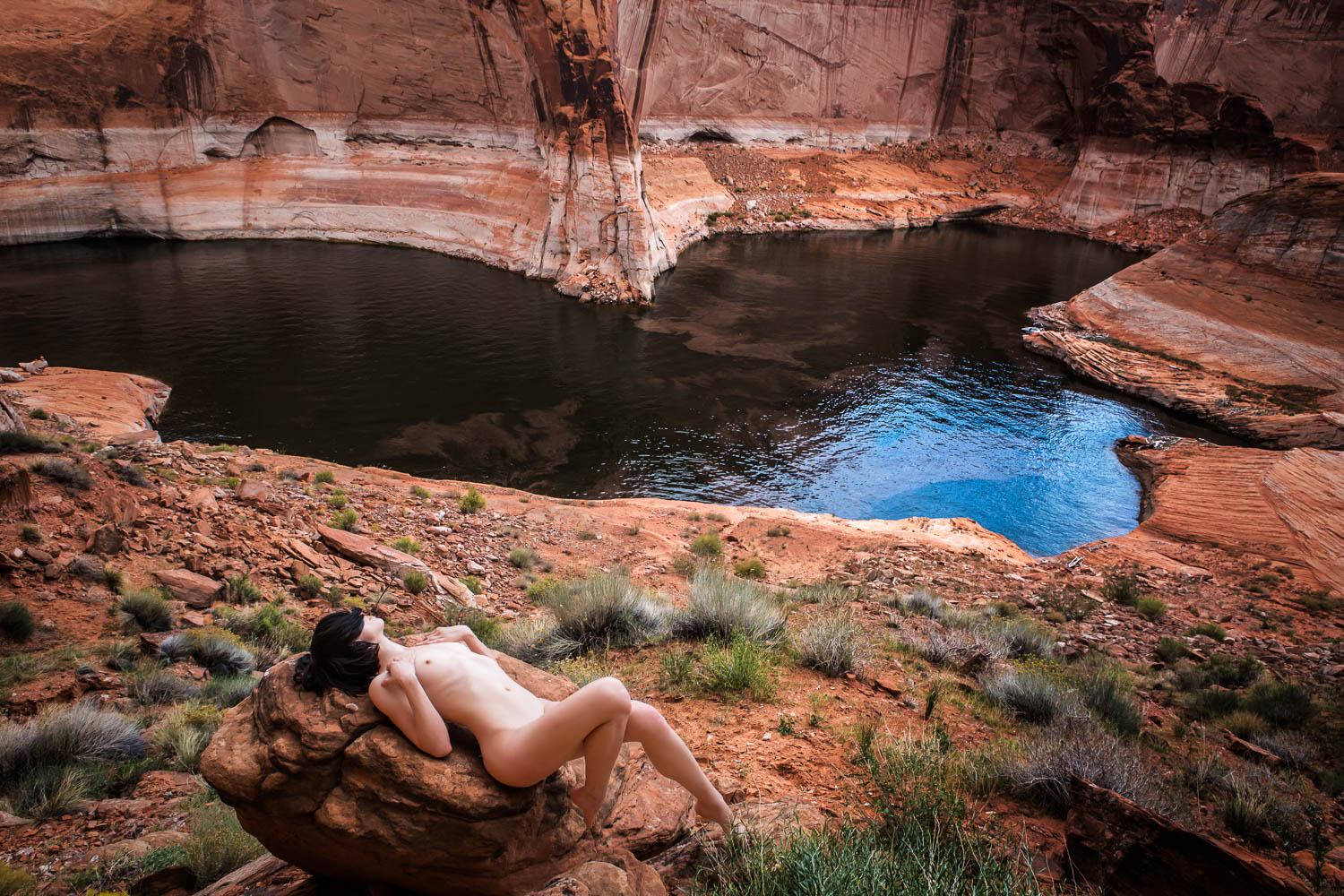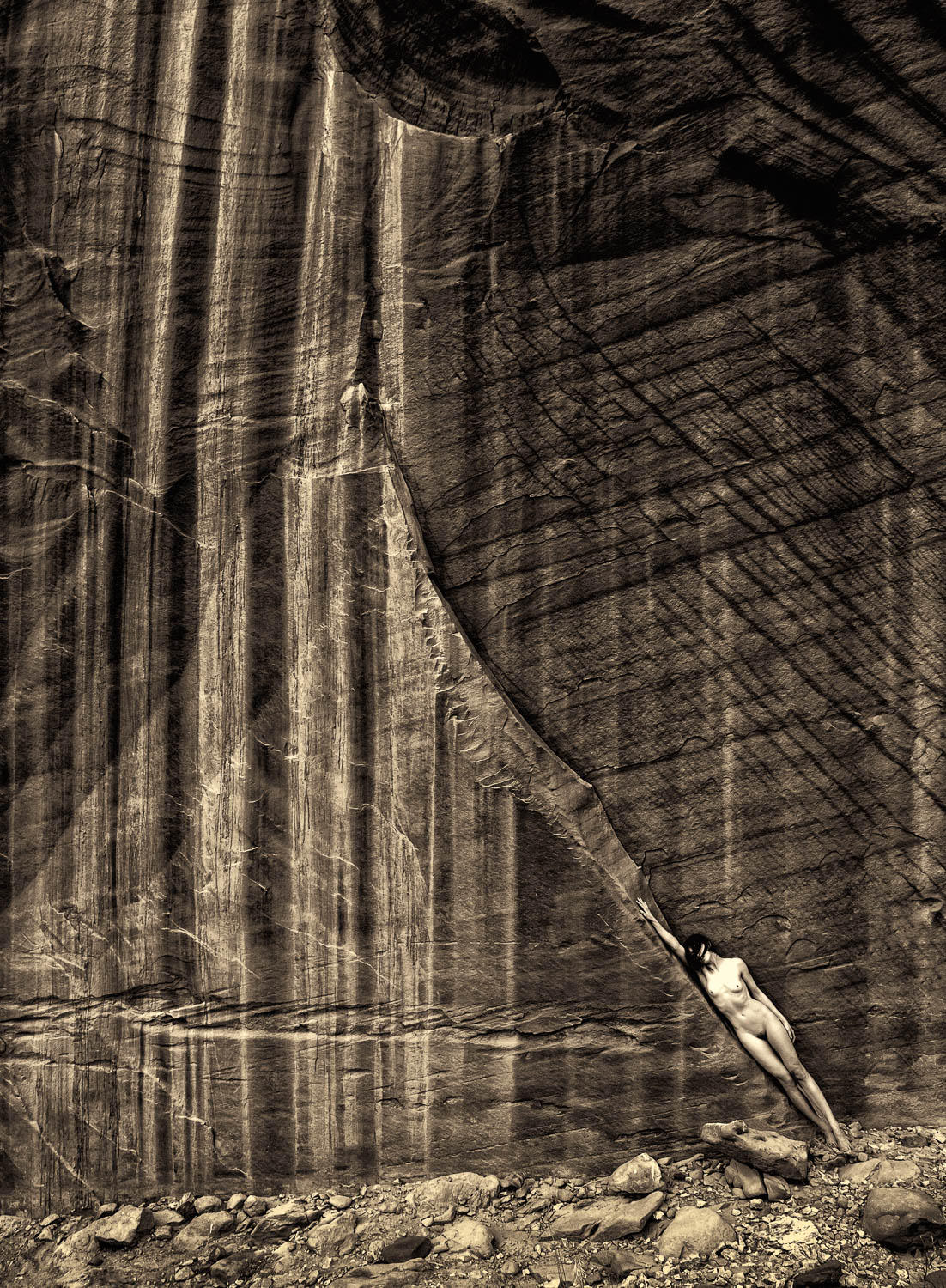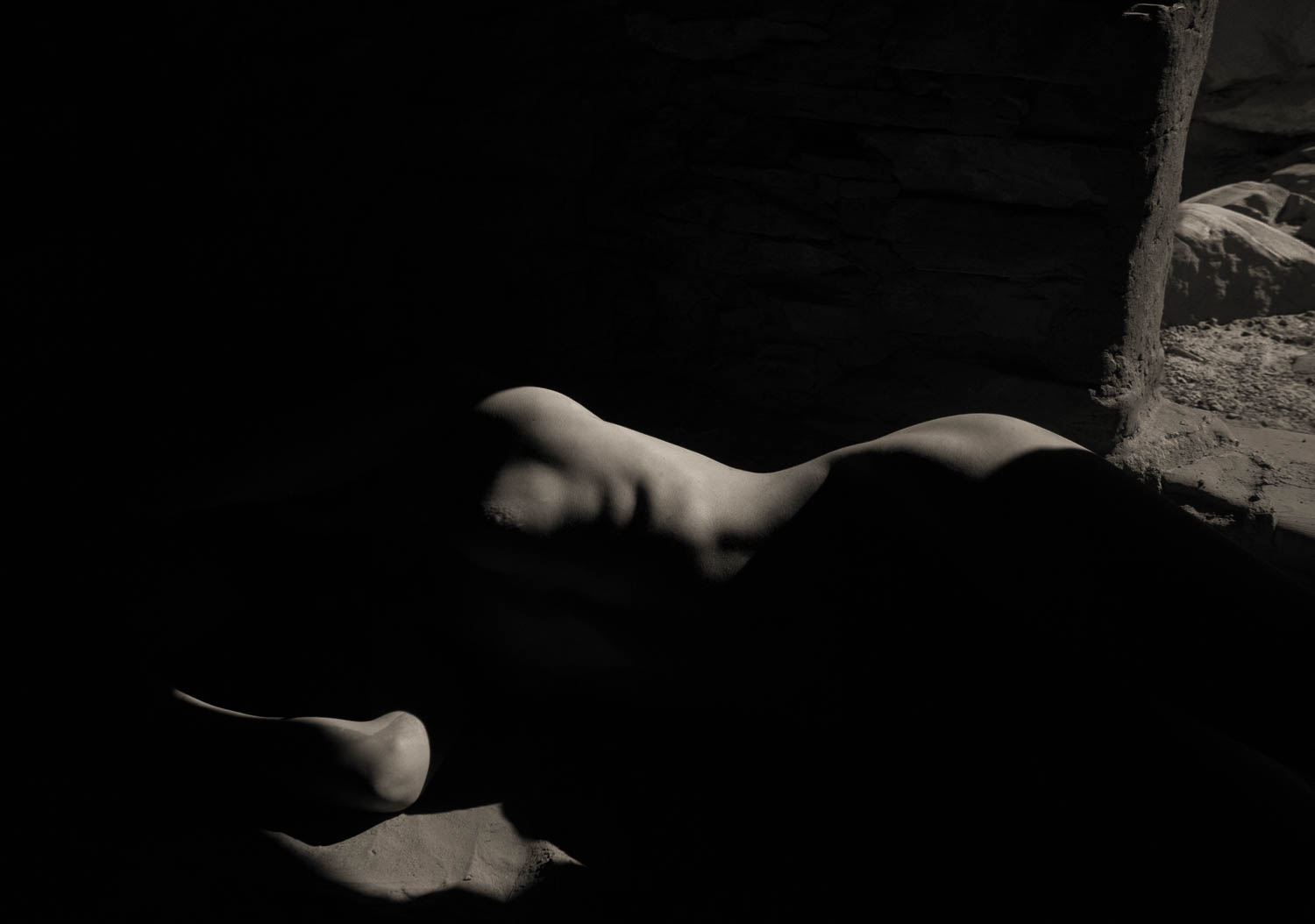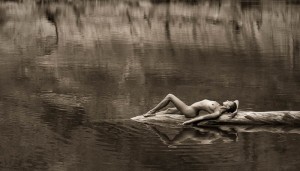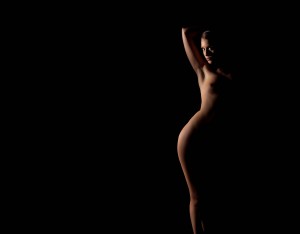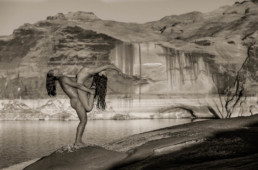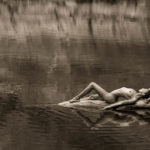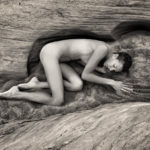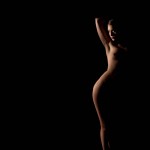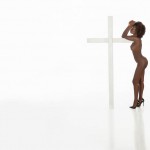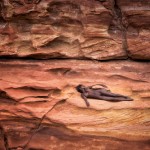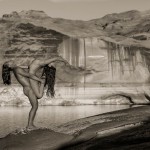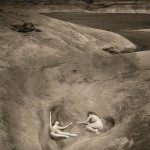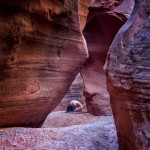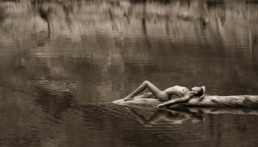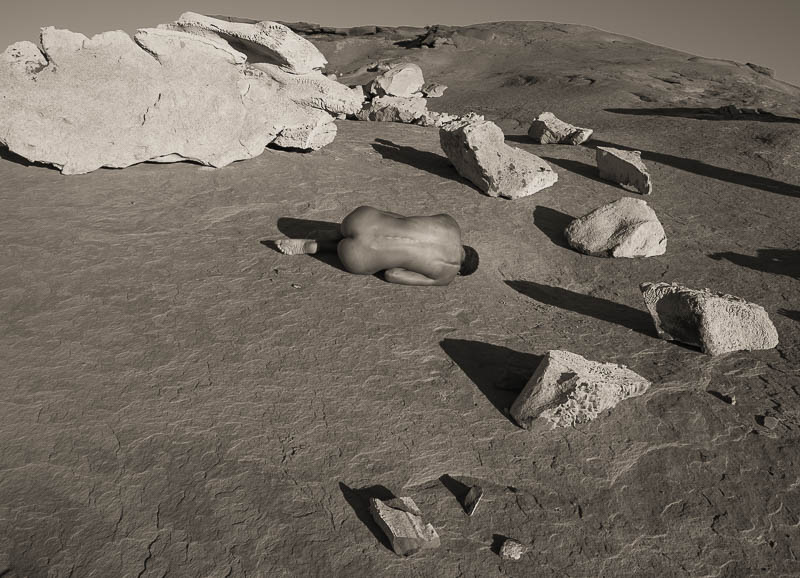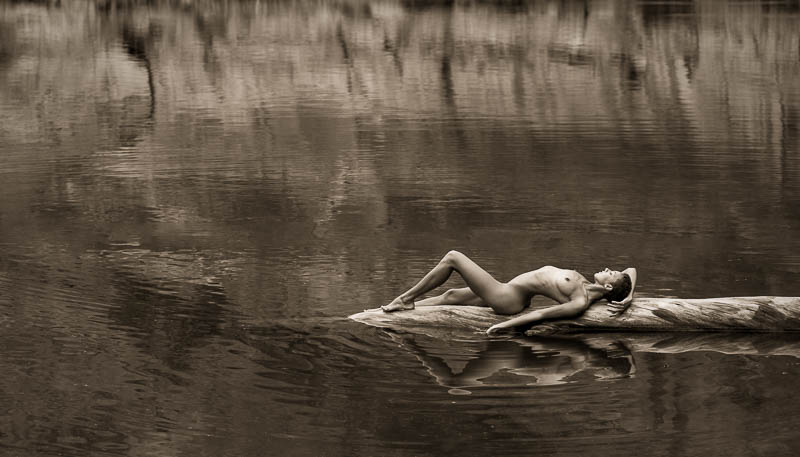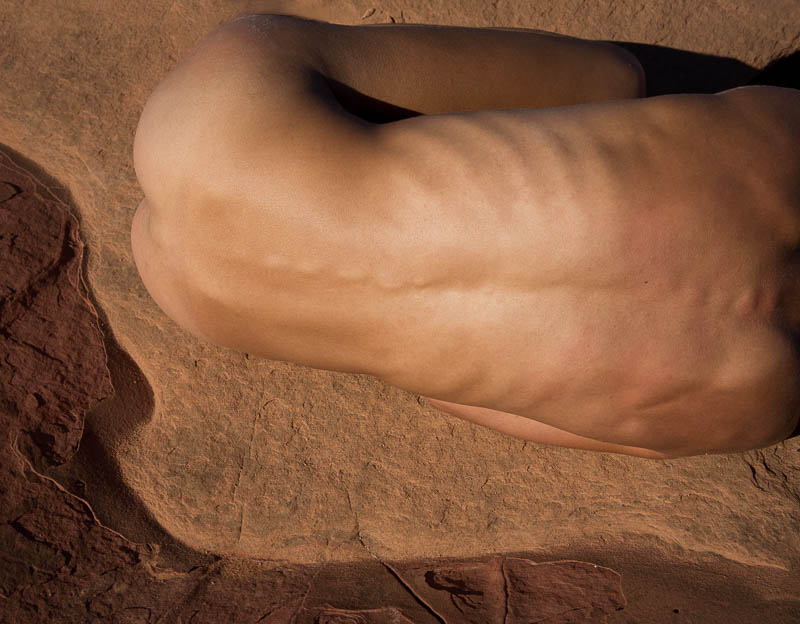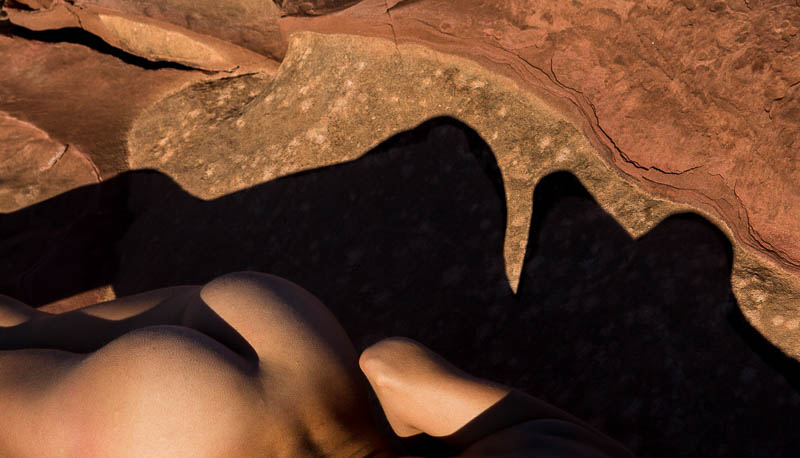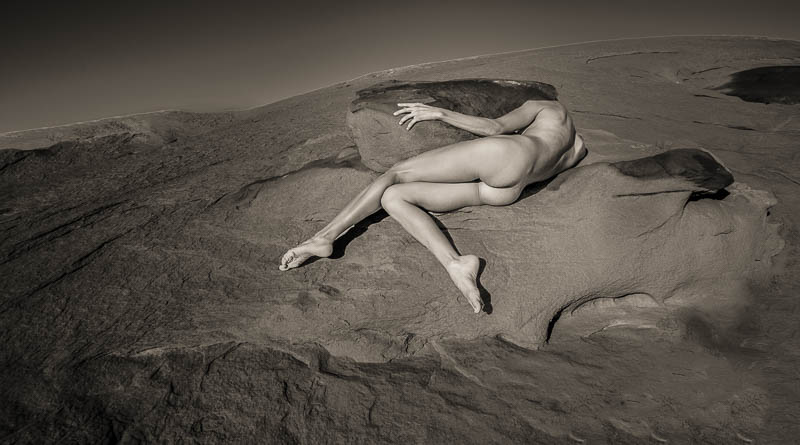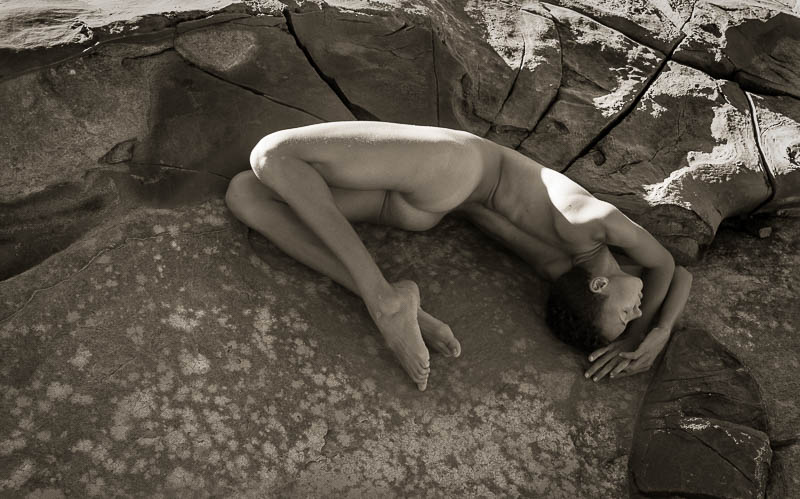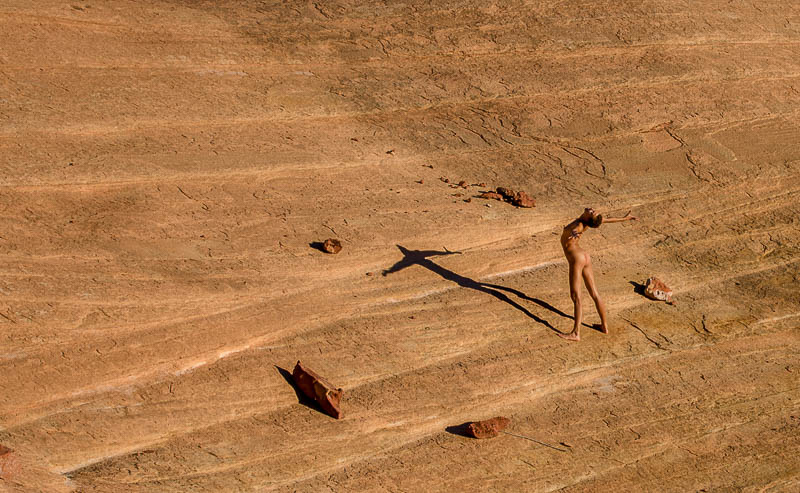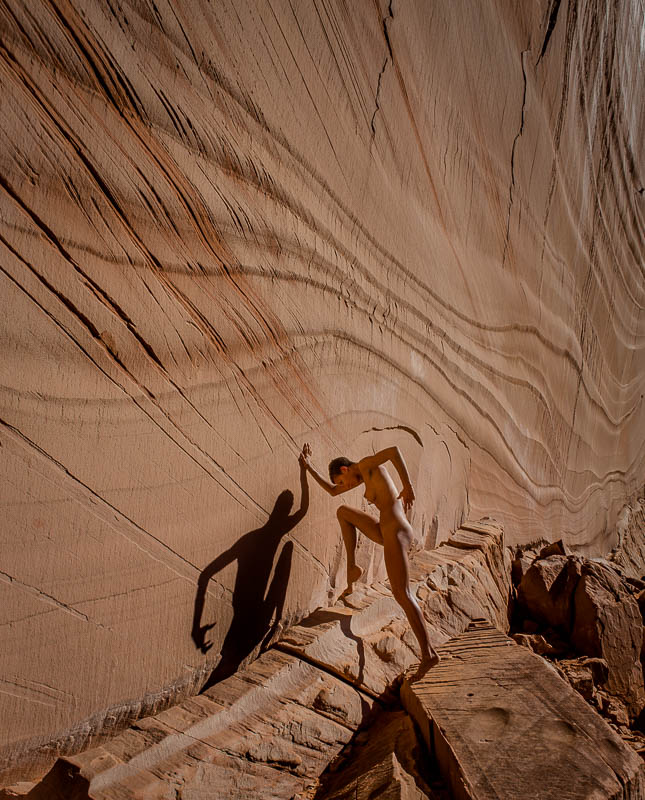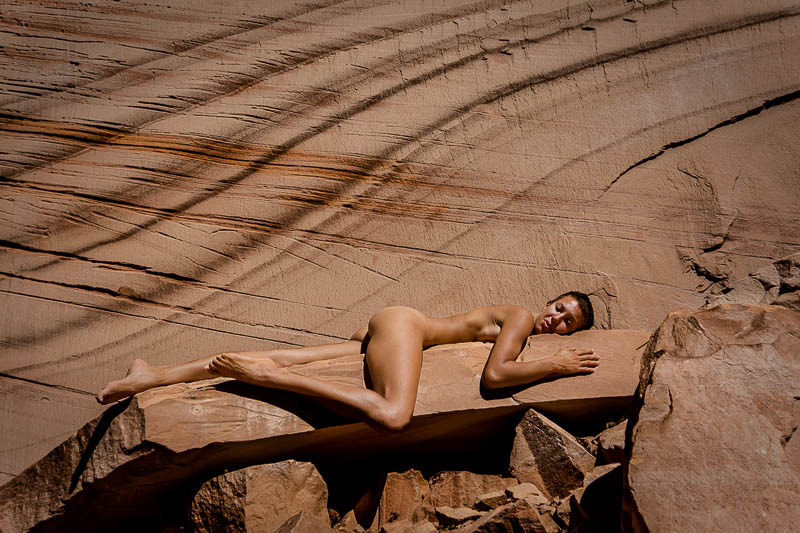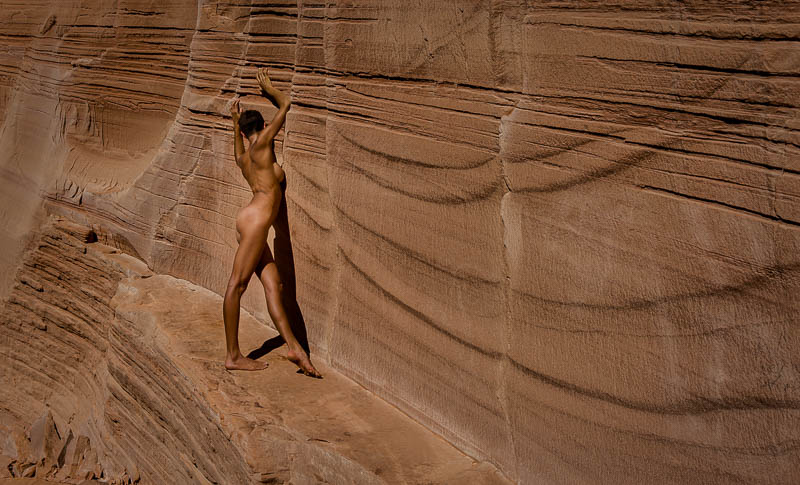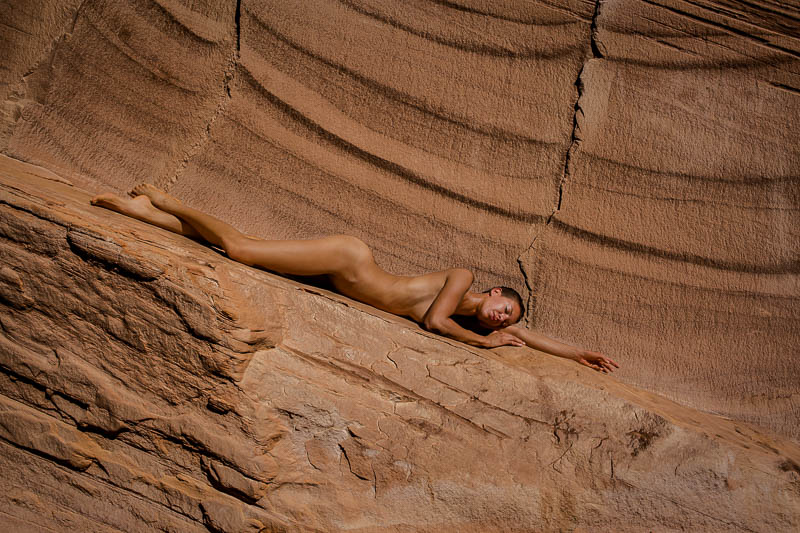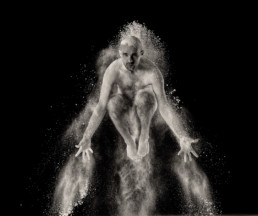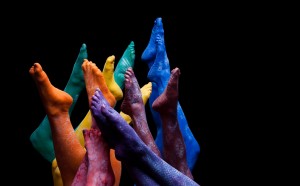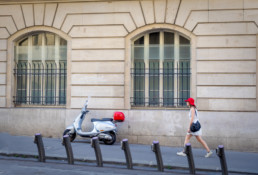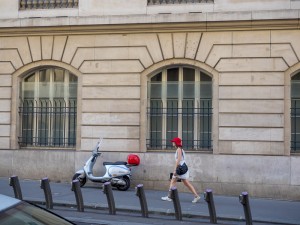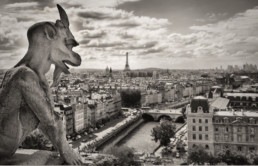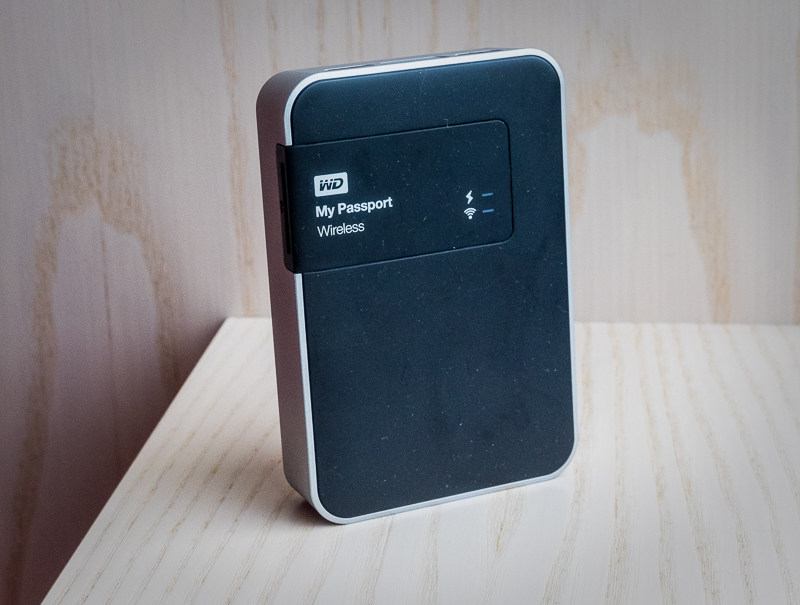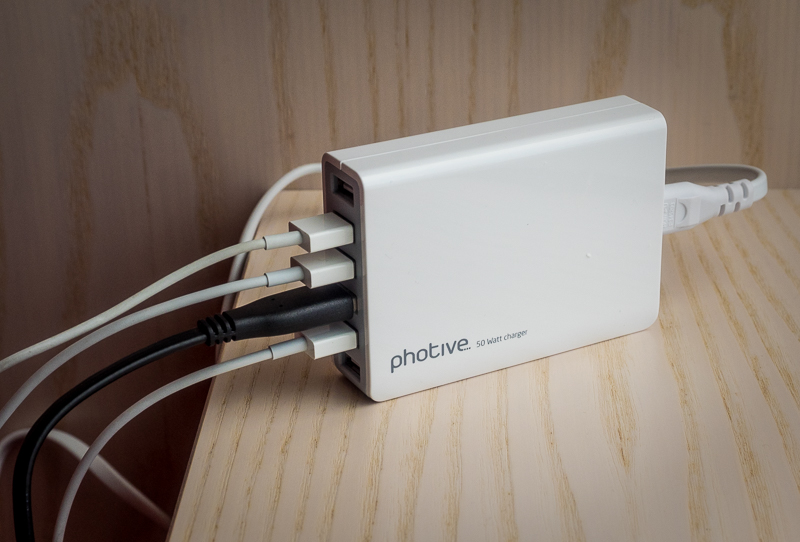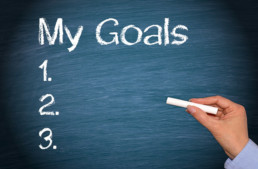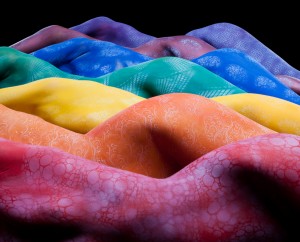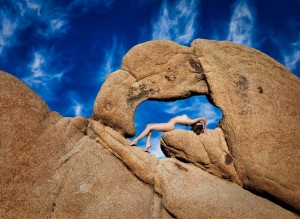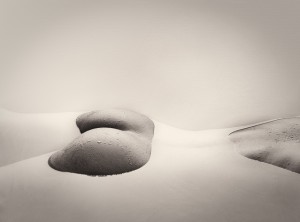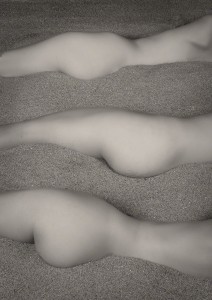Lake Powell Images - Aristodeme
Aristodeme
This is a continuation of my Lake Powell images, there are so many that I'm can't put them all into my portfolio, but there are many worthwhile images, so I decided to show them here as blog posts. Each post will present all of the images for a given model. This week it is Aristodeme.
If you missed it be sure to check out Cwen's images
These were shot at Lake Powell during a week long trip in October of 2015. I talk about the trip in this post about Taking a Workshop
Selecting My Best Work
How do I select my best work? After my last post, A Good Crop - My 2015 Photos, I had multiple people ask me what was my selection criteria for selecting my best images of 2015. My first thought was that they must be saying "How could he pick that piece of crap as his best photo?" But perhaps they really wanted to know. Looking at the images as a group there does not seem to be any common theme between them which makes the selection criteria difficult to grasp.
So I'm going to answer both possible questions and explain my selection process and how I went about determining my best images of 2015.
Selection Criteria
Here are the things I look at when evaluating my photos and trying to determine which are my best.
- Story
- Graphic Elements
- Emotion
- Does it evoke an emotion
- Do I have an emotional attachment to the image
- Audience Response
- Feedback for people who see my images
- Juried exhibits and shows
Story
The strongest photos are always the ones that tell a story. It doesn't have to be an overt story, in fact I try to make the story ambiguous, so the viewer comes to their own conclusion based upon their own life experiences. Many of my best of images this year are on the list because of the story they tell.
Graphic Elements
I think of graphic elements as a combination of composition, and the way the various shapes in the image interact. Abstracts and may of my street images rely on these shapes since there isn't really a story to tell. Strong graphical elements are going to draw the viewer's eye and become the obvious subject of the image.
Emotion
The emotion criteria involves evaluating two types of emotions responses, one good, one not so good.
The Good Emotion
When looking at the photo the question I ask is, "Does the photo evoke an emotional response in the viewer?". A sign of a good photograph is one that gets an emotional response, any response, the type of emotion is unimportant, what IS important is that it makes the viewer feel something.
Emotional Attachment
The other type of emotion that I experience is that I remember the emotions I felt when I took the photo. These emotions are not necessarily good because they cloud my judgement and prevent me from making an impartial decision about the worth of an image. I typically try to avoid any emotional attachment when selecting photos, but sometimes my feelings are so strong for an image I will include it in my selection. I just like it! Often that emotional attachment is partly influenced by the audience response.
Audience Response
Ideally I am taking photographs for myself and not to please others. To truly be art the image has to come from me, and not be influenced by what I think my audience might like. This is a constant struggle, and I try to not think of my audience when I take a photo, but often I know it is going to resonate with my audience the moment I click the shutter. More often I will like an image that my audience does not, or I will show people an image I think is just OK and they love it. I initially considered this audience influence as a negative, but have come to realize it is just another piece of the selection process.
Getting Feedback
I am constantly showing my portfolio to people, friends, family, photographers, models, strangers, pretty much everyone I meet. I always look for what images they respond to, which ones to they comment on, which ones do they stare at a little longer than others, which ones do they flip through quickly. This feedback influences my decision on what are my best images. The responses are weighted by who is giving the feedback. If it is my Mentor then it is instantly going into the short list, on the other hand my non-photographer friends have less weight. Audience response alone does not select a best image, but it is just another data point when I'm making my decision.
Exhibits and Shows
I entered photographs into 24 juried exhibitions and contests this past year (a blog post is coming soon about that experience). In 15 of those competitions my images were selected for the show or won a prize in the contest. This tends to make me think more highly of these images and makes it more likely that I will pick it as one of my best. However it mainly affects older images, I only submitted 2015 images in a couple of shows. But it does influence my perception of the value of my images. Several images from past years have won numerous times, so I'm inclined to think more highly of those images. :)
Analysis of My Best non-Model Photos
I find it more difficult to determine my best photos from my street and landscape photos. In general they tend towards more abstract images and that is so subjective, I ended up not picking any of my abstract street photos as my best even though I like quite a lot of them.
Shadow Walkers
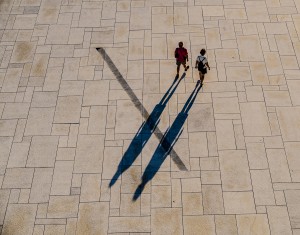 This image is all about the strong graphic 'X' created by the shadows crossing the line on the ground. This image as also gotten good audience feedback both from contests and individuals, I have had several people email me to tell me how much they like the image, that is rare.
This image is all about the strong graphic 'X' created by the shadows crossing the line on the ground. This image as also gotten good audience feedback both from contests and individuals, I have had several people email me to tell me how much they like the image, that is rare.
A Time to Himself
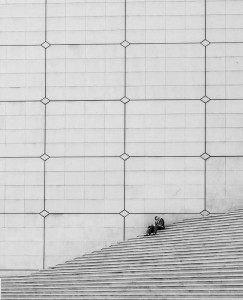 I picked this image because I think it tells a strong story and evokes an emotional response. It is also strong graphically with the huge negative space above the man, helping to strengthen the story and the feeling of isolation.
I picked this image because I think it tells a strong story and evokes an emotional response. It is also strong graphically with the huge negative space above the man, helping to strengthen the story and the feeling of isolation.
I submitted this into a critique at my local camera club and the judge suggested cropping the top, there were a dozen people in the audience who yelled "No!". It is very rare for anybody in the audience to do such a thing, but it tells me that my instinct about the graphic element of the negative space was correct. (The judge ended up giving it 3rd place).
The Pose
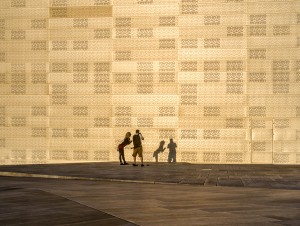 I picked this image mainly because of my own emotional attachment to it. It does tell a good story and the gold background and shadows make for a strong graphic element, but this image just barely made the cut.
I picked this image mainly because of my own emotional attachment to it. It does tell a good story and the gold background and shadows make for a strong graphic element, but this image just barely made the cut.
Feet Above
This image is the most abstract of all the best images. It has strong graphics, it also has a reasonably strong story. Audience feedback is non-verbal, instead people tend to linger on this image. Making people pause on an image is always a good thing.
Desert Road
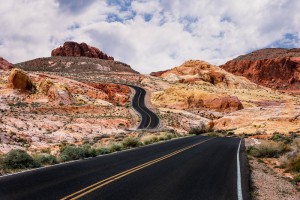 This image barely made the cut as one of the best images for 2015. The main reason it did was because of audience response, every person who sees this image comments on it, ohhs and ahhs, etc. I think it is because of the colors and the road is certainly a strong graphical element, however I think it is just an average image, but the audience thinks differently.
This image barely made the cut as one of the best images for 2015. The main reason it did was because of audience response, every person who sees this image comments on it, ohhs and ahhs, etc. I think it is because of the colors and the road is certainly a strong graphical element, however I think it is just an average image, but the audience thinks differently.
Analysis of My Best Model Photos
Reflection and Ripples
I believe this is my top image of 2015. This is more from personal emotion than anything else. Both the graphics and the story are strong, but my opinion is more subjective for this image than any other. Whenever I come across this image I just like it. Although I feel like I should know why, I can't articulate it.
What is your reaction?
Nestled
 For the past three years I have been working on a body of work of nudes in the rocks, where I try to make the human body fit into the rock landscape, this image is a great example of that.
For the past three years I have been working on a body of work of nudes in the rocks, where I try to make the human body fit into the rock landscape, this image is a great example of that.
Strong graphical elements, with the rock following the curve of her body. The story is told by the lines in the sand coming from her fingers. Without that it would just be a good image, that small element adds emotion and story and brings it into the top of the list.
Melissa Jean
This image is all about the graphic element of the curve of her body. The negative space also adds to the graphical impact. The shadows add mystery and create a small story element, but it is dwarfed by the graphical elements.
At the Cross
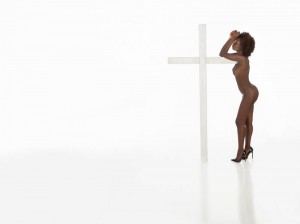 This is image has a strong story. It is an ambiguous story which is my favorite type to do in my images. It causes the viewer to pause and create their own narrative for the image. I also like the graphic elements, the minimalism, the negative space, the reflections on the floor all add together to make this image make the list.
This is image has a strong story. It is an ambiguous story which is my favorite type to do in my images. It causes the viewer to pause and create their own narrative for the image. I also like the graphic elements, the minimalism, the negative space, the reflections on the floor all add together to make this image make the list.
Nude in the Rocks 4
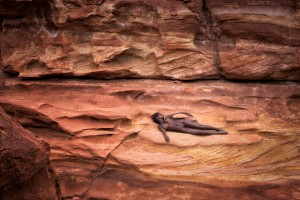 I picked this image because of the strong graphical content, the model fits into the curves of the rock, her horizontal position ties into the horizontal lines of the rocks. This image also gets a very strong audience response, partly because of the composition, but also because of the color palette, people seem to respond well to it.
I picked this image because of the strong graphical content, the model fits into the curves of the rock, her horizontal position ties into the horizontal lines of the rocks. This image also gets a very strong audience response, partly because of the composition, but also because of the color palette, people seem to respond well to it.
Acroyoga on the Shore
 This image has a reasonably strong story but the compositional elements are the star. The shapes of the bodies are interesting, the curve of the female's body mimics the curves in the rock across the water. I deliberately framed the image so the model's hand just touched the curve in the rock.
This image has a reasonably strong story but the compositional elements are the star. The shapes of the bodies are interesting, the curve of the female's body mimics the curves in the rock across the water. I deliberately framed the image so the model's hand just touched the curve in the rock.
Tasia in the Rocks
 I choose this image because of the scale of the landscape vs the model. I like to call my "Find Waldo" photo. This is more of a personally emotional image. It is another one where I just like it even though it doesn't resonate with most of my audience.
I choose this image because of the scale of the landscape vs the model. I like to call my "Find Waldo" photo. This is more of a personally emotional image. It is another one where I just like it even though it doesn't resonate with most of my audience.
All Heart
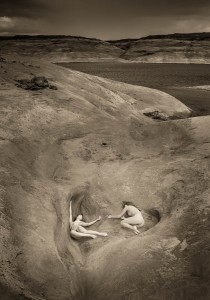 This is another image where I like the scale of the image, the heart shape depression they are resting in is a fairly strong graphical element, their interaction is part of the story.
This is another image where I like the scale of the image, the heart shape depression they are resting in is a fairly strong graphical element, their interaction is part of the story.
Lost
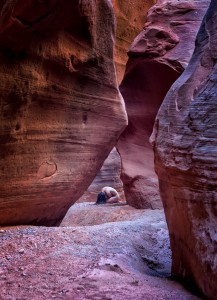 This image is about story and emotion. The canyon walls make for an interesting composition and frame the model nicely, but that is secondary to the model's pose and isolation.
This image is about story and emotion. The canyon walls make for an interesting composition and frame the model nicely, but that is secondary to the model's pose and isolation.
Summary
So there is my thought process for why I selected these 14 images as my best of 2015. As you can see some are a little arbitrary and a month from now they could be replaced by other marginal images, that didn't quite make the cut.
Let me know your thoughts, which ones do you think shouldn't have made the cut?
A Good Crop - My 2015 Photos
Twelve significant photographs in any one year is a good crop
- Ansel Adams
My Crop
I don't feel like I produced my best work this year, so I decided to do an analysis of my productivity for the year. I took 24,063 photos this past year for my own personal work (meaning that this excludes family photos and commissioned work, I actually clicked the shutter 31,537 times this year).
The Breakdown
I shoot several genres of photography and this year I primarily focused on two, street photography and models, so when I did my counts I separated the data for the two. Non-Model includes street photography, landscapes, abstracts, etc.
| Non-Model | Models | Totals | |
| Total | 10,500 | 13,563 | 24,063 |
| Keepers | 502 | 114 | 616 |
| Portfolio Worthy | 36 | 42 | 78 |
| 5 Star | 5 | 9 | 14 |
Keepers - these are the photos that I actually edited and considered finished.
Portfolio Worthy - There are images that I actually exhibited or showed to others via my web site, social media, etc.
5 Star - These are the photos I consider my best work of the year. These are my "Crop"
Analysis
I felt like I struggled this year with my photography, I had finished up several bodies of work and didn't know where to go next. I did a couple of model shots in the first half of the year (accounting for 7 of Portfolio Worthy images) and then I was travelling a lot and focused instead on my street photography. If it weren't for the Lake Powell workshop I took in October I would have only had 1 Five Star image from my model photography for the year.
Another interesting observation is that although I took similar number of Non-Model photographs to the Model photographs, I had a five times the keepers but fewer 5-star images. That is partly because there are a lot more varied photographic opportunities when doing street photography rather than with a model, but in the end fewer of them are as good. Some might argue that is because of lack of skill, perhaps. However many are abstracts and I think it is more of a selection process. What makes a 5-star abstract?
Conclusion
The final crop of 14 images is a good haul for the year although I am not entirely happy. If it weren't for the last minute trip to Lake Powell my production for the year would have been much less and not as strong.
I feel like this year was not an improvement but more of staying with the status quo. I plan to step up my photography game for 2016.
My 2015 Crop
How About You?
How was your crop this year?
UPDATE: I had a lot of questions about my selection critiera so I wrote another post that details why I picked each of the above photos. http://craigcolvinphotography.com/selecting-my-best-work
Lake Powell Images - Cwen
Cwen
I have had people ask to see more of my Lake Powell images, there are so many that I'm can't put them all into my portfolio, but there are many worthwhile images, so I decided to show them here as blog posts. Each post will present all of the images for a given model. This week it is Cwen.
These were shot at Lake Powell during a week long trip in October of 2015. I talk about the trip in this post about Taking a Workshop
Juried Show - Garrison Art Center in New York
I have two pieces being shown in the PHOTOcentric Juried show at the Garrison Art Center from December 5,2015 to January 10,2016 in Garrison, New York.
Liftoff (shown above) won first place in the open division.
The other image being shown is Rainbow Feet
Juried Exhibition - Center for Photographic Art
I have a photo being exhibited as part of the 2015 International Juried Exhibition—A Single Photograph Competition at the Center for Photographic Art in Carmel, CA. The show runs from November 21 through January 09, 2016
Improve Your Photography - Take a Workshop
I just got back from Lake Powell where I participated in the Dynamic Nude Workshop held there by Joel Belmont. Joel does several workshops at Lake Powell and this one was for advanced photographers, meaning there was not going to be a lot of instruction, instead Joel would take us to various locations and we would plan our own shots. This was fine by me as I was mainly taking the workshop for access, and didn't really expect to learn something, but a funny thing happened as it does on all workshops.... I actually learned something and my photography improved as a result.
Marinating in Photography
My Dad used to go to 3-day or 5-day golf workshops and always played better as a result. He pointed out to me that when you are focusing on learning and hitting 1000's of golf balls a day you can't help but get better. Rarely would you go out and hit that many golf balls in a day on your own. The same thing happens with photography workshops, from the time I wake up until the end of the day when I go to sleep I am concentrating on nothing but photography. We get up and shoot, come back edit photos, go shoot again in the afternoon, come back and edit photos, do a photo critique and go to bed. I call it "Marinating in Photography", because I am surrounded by nothing but the pursuit of photography all day. No distractions, just shoot, edit, repeat. I always find that my vision, my way of seeing, my editing skills all improve as a result of the non-stop pace of a good workshop.
Hanging Out With Your Tribe
The other photographers at a workshop are my people, they understand me and the issues that I face in photography, we can have deep meaningful conversations about photography and I always learn something about photography from my peers at workshops. During this recent workshop at Lake Powell one of the participants showed me his simple technique for making a nude image stand out in a black and white image and it blew my mind and made me a black and white convert. (I'll share the technique in an upcoming blog post. Subscribe so you don't miss it :) ).
During our editing sessions there was a constant sharing of techniques, approaches. Every photographer thinks about an image differently and I learned something from each and every one of the participants at the workshop. Many workshops we edit alone in our hotel rooms each night, but I found I got so much more out of the workshop by having these group editing sessions. I'm going to seek this out for future workshops.
Sharing and Critique
I have often discussed the value of good critique, it is how I learned to be a photographer. I also see it through the growth of my apprentices in The Arcanum, every single one of them has grown as a result of the critique they receive from me. At workshops the critique sessions are extremely valuable and not for the reason you might think. Yes, you get feedback on your image, but for me the real value comes from seeing the work of others. Most of the time they are at the same location as I am, standing next to me, taking images of similar subjects and their images look nothing like mine! I learn to see in different ways. That is huge! We tend to get stuck in ruts and follow familiar patterns, seeing someone else's approach and how they look at the world helps me break out of my traditions and standard patterns and try new techniques.
Recharging Your Creative Battery
I always come away from a workshop reinvigorated and full of creative ideas and shots I want to pursue. Our creativity and passion levels ebb and flow and it can often be a struggle to get back in the swing of things and get out there and take photos that are meaningful to me. Workshops are always the kick in the butt I need to get me going again.
Next Workshop
I'm already looking for my next workshop to sign-up for. What is your favorite?
Cover photo courtesy of Ryan Fenix Sumner. Used with his permission.
The Decisive Moment?
I Create My Photos
Making the Photo
The Decisive Moment?
The Future
Essential Travel Tools for the Photographer
For the past 26 days I've been travelling all over Europe taking photographs, a lot of photographs. In this post I wanted to share a couple of items that I took with me that I found indispensable.
Traveling Light
On my last trip to Europe 3 years ago I took over 45 lbs of camera and computer gear. This trip I wanted avoid that weight so I went with the bare minimum.
Micro 4/3rds Camera
Instead of my heavy Canon 5DmkIII I decided to take the Olympus OMD EM-1 with 4 lenses,
This gave me an effective range to 14mm-600mm which should cover every situation I was like to encounter. Normally I would not take the 75-300mm lens, but 1 week of the trip was a Mediterain Cruise and I wanted some reach from the cruise ship. In hindsight that was the right decision.
iPad instead of Laptop
This was a harder decision. I needed mail/internet access, the ability to edit photos, and a way to backup photos. On several recent domestic trips I had taken my laptop with the plan of editing photos and then never got motivated to do so. So my thinking was I would just use the iPad for some light editing, and save all the heavy Photoshop work for when I got home. My editor of choice on the iPad is Snapseed (they also have an Android version) so I was covered for the editing. Now my only issue was backing up my photos.
Backup Strategy
I purchased a few extra SD cards so I would not have to reuse cards while on my trip. But I still needed to make a backup of them each evening. I did some research and decided on the Western Digital My Passport Wireless. This is a great little drive. It has a built-in battery, wifi, and most importantly a SD slot.
Each night I would put the SD card in the WD drive, push a button and it would copy the contents of the SD card to the drive. It has the option for to erase the card or leave the photos on the card, it is smart enough to not copy photos that it has already backed up. A great solution.
In addition using the wireless capabilities I was able to use my iPad to browse the photos and download the ones I wanted to edit and post on all of my social media sites.
Charging
Part of life these days are all of my electronic devices that I travel with that need to be charged, my iPhone, iPad, Apple Watch, the WD My Passport, etc. One of the challenges is finding enough plugs in a hotel room to charge all of my (and my family's) devices. When travelling domestically I put a power strip in my suitcase so I only need to find one vacant plug in the room and can charge 6 devices, but that power strip won't work in Europe at 220V, so I needed to find another solution. I ended up with a Photive 50W USB Charger. This device is AWESOME, it has six USB ports and allowed me to charge all of my devices from a single outlet. It works at both 110V and 220V and has now replaced the power strip in my suitcase.
Conclusion
Overall this all worked great. I did have one small issue, I lost my iPad halfway through the trip but was able to borrow my wife's some nights to do some quick editing. I loved how light my camera bag was and carried it with me a lot more than I might have if I had my DSLR.
The only downside was not having my laptop to sort/keyword/edit photos each night. The result was I got home with over 6000 images and it took me a couple of days just to organize and keyword them all. Would have been easier to do a little bit at time each night instead of all at the end of the trip.
Next time I travel I plan to use the same basic strategy as outlined above, it worked very well.
What do you take on your travels that you find indispensable?
Review of 2014 Photography Goals
At the beginning of each year I plan out my photography goals for the coming year.
Here is the post where I talked about my goals for 2014. It is now 2015 and time to review those goals.
Here Were My 2014 Goals
- Become a Better Photographer
- Attend one workshop or conference every quarter
- 30 mins of photography education every day (see this blog post)
- Schedule one photowalk every month
- Schedule one photography trip every quarter (Oregon Coast, Zion, Boston, Page)
- Grow my Photography Audience
- Post 2 photos/week on social media sites
- Submit every new project to print publications until it is published
- Enter a photo contest very month
- Pursue and participate in a galley show every quarter
- Create Epic Photos
- Schedule one large production shoot every quarter
- Complete 4 current photo projects
- Shoot Multiscapes II in January
- Shoot one conceptual photo each month
- Schedule 3 shoots to complete Paper Doll project
- Edit and compile Reflections photos
- Start 4 new projects
How Did I Do?
Become a Better Photographer
I did reasonably well with these goals. I attended workshops with Aperture Acdemey in Yosemite, a workshop with Glen Wexler at the Palm Spring Photo Festival, Photoshop World in Las Vegas, and a Kim Weston Nude Workshop in Carmel.
I had photo trips to the Salton Sea, Joshua Tree NP, Oregon Coast, Rome, Yosemite and Alaska (although Alaska was not specifically a photography trip I did get some great photos). I did a total of 9 photowalks so not quite one a month, and I did my 30 mins of photography education each day for a total of 312 days. So I consider this a success and would give myself an A.
Grow my Photography Audience
I struggled with portions of this. Let's start with the successes. I showed my work in 9 different exhibits and galleries. Two of these were art shows where I was able to sell my art and I made over a dozen sales of my prints at these 2 shows. I entered 7 contests and won awards in 5 including the grand prize in the 3rd Eros Awards. I found it difficult to enter one contest a month as there weren't a lot of contests that accept nude works and my non-nude works I don't feel are quite up to my standards yet.
Now for the failures. I did posted a lot more photos to social media than I have in the past but it was very sporadic and was no where near 2 photos/week. Part of my challenge is I want to post some of my latest nude works, but I can't easily do so on social media. I'm going to work on this for 2015.
I also did not do well with submitting work to publishers until it gets published. I did attend FotoFest in Houston where I showed my work to numerous publishers, but no takers. My challenge here seems to be more about identifying appropriate publications to submit to.
Create Epic Photos
I did well on doing a large production shoot every quarter, I ended up doing five. I did the Rainbow Multiscapes, Joshua Tree nudes, Burying bodies in the sand, created a wet set in the studio for water shoots, and did a series of flour shoots. I'm happy with the results from all of them except the sand shots, they did not live up to my vision. Overall I'm very happy with the shots I got from these big productions and it just reinforces the idea that doing the hard work has it's rewards.
I did change my direction over the year and ended up abandoing the Paper Doll project, I also did not shoot one conceptual photo each month or start 4 new projects. I feel like I could have shot a lot more this past year, but I struggled with concepts. I tried to fit all my shoots into the overall umbrella of "The Body as Art" and I think that restricted me somewhat from trying other things that might have resulted in some significant new project. So I've learned from that and going to make sure I don't get stuck in a rut with my photography projects.
Grade A for big production shoots, F for new projects, with biased and weighted averaging I'm going to give myself a B. :)
What's Next?
Now it is time to create my list of goals for the coming year. I'll save that for another post.
So how you do last year?

